The magic of natural beauty
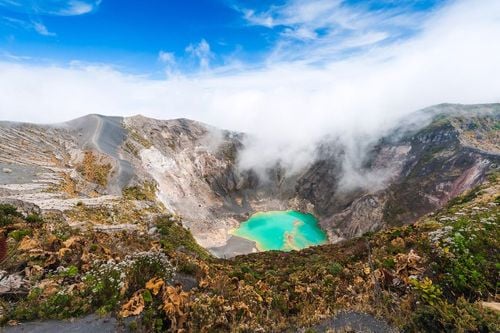
Arenal Volcano Park, Costa Rica.
- © Maridav / Shutterstock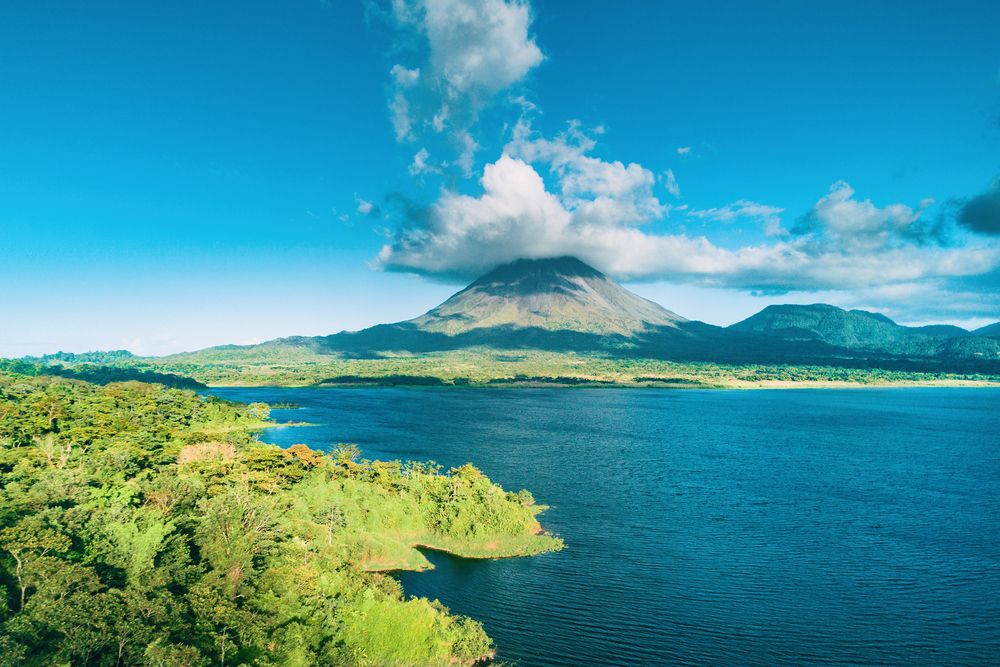
The magic of natural beauty
With around 25% of its territory protected, Costa Rica is a true paradise for nature lovers. Nestling between North and South America, the country is a biological crossroads, home to species from the entire American continent, a unique ecosystem. Costa Rica represents just 0.03% of the Earth's total surface area, but is home to over 5% of the planet's biodiversity. It is therefore a very important country for nature conservation and global biodiversity.
In fact, the country's national parks are grandiose. Among the most impressive are Manuel Antonio National Park, Corcovado Park and Tortuguero Park. Protected from human impact, these havens of peace provide an opportunity to discover the country's incredibly rich and varied flora and fauna. You'll have the chance to see emblematic animals such as howler monkeys, toucans, sloths and jaguars.

Un toucan du Costa Rica
- © Ondrej Prosicky / ShutterstockTravellers will have the chance to admire a wide variety of ecosystems, from tropical rainforests and mangroves to volcanoes and beaches. On top of that, there are plenty of outdoor activities on offer, including hiking, birdwatching, swimming on pristine beaches and surfing.
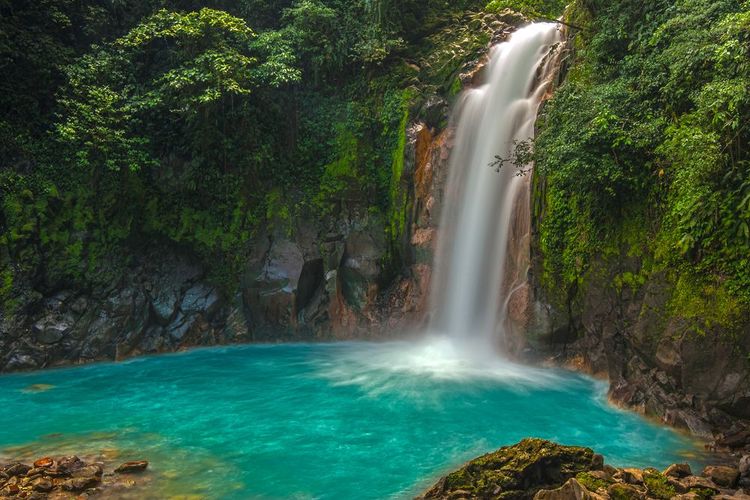
Rio Celeste Cascade in Costa Rica
- © William Berry / ShutterstockCosta Ricans are renowned for their generosity and warm welcome to tourists. Even if you don't speak Spanish, many locals speak English very well, which makes it easier to talk to them. You'll be greeted with a smile. Costa Ricans will be happy to share their culture, gastronomy and traditions with you. The Ticos, as they call themselves, are also very respectful of the environment and proud of their country. Let yourself be immersed in "Pura Vida", Costa Rica's positive philosophy.
Costa Rica is a volcanic country with over 200 volcanoes, some of which are still active today. Visitors can explore the country's most impressive volcanoes, including Irazù, Poás, Arenal and Turrialba. During your hikes in the volcano national parks, you'll discover unique and fascinating volcanic landscapes. The hot springs near the volcanoes, the fumaroles (smoking breaches in the earth) and the craters are unforgettable experiences.
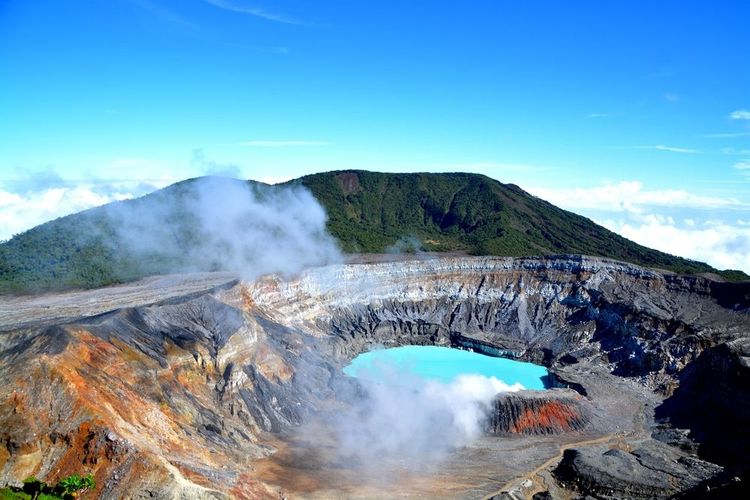
Costa Rica's Poàs volcano
- © Styve Reineck / ShutterstockCosta Rican cuisine is a true culinary discovery. Traditional dishes such as gallo pinto, rice and black beans mixed together, ceviche, fish marinated in lime juice, and casado, an assortment of meat, rice, beans, vegetables and plantains, are must-tries. Fresh fruit, such as pineapple, papaya, mango and maracuja, is also delicious and is often served as a dessert or juice in the streets and on the beaches. Local spices and herbs, such as cumin, coriander and black pepper, add unique and tasty flavours to every dish.

Le gallo pinto, plat traditionnel costaricain
- © Esdelval / ShutterstockCosta Rica has over 1,290 km of coastline on two oceans: the Pacific and the Caribbean. The country's beaches are among the most beautiful in the world, with crystal-clear waters and fine white sand. On the Pacific coast, you'll find pristine sandy beaches like the famous Manuel Antonio Beach, famous surf spots like Tamarindo, and secluded coves like Conchal Beach. On the Caribbean coast, you can enjoy coconut-fringed beaches such as Cahuita or Puerto Viejo, with their relaxed atmosphere and vibrant Caribbean culture. Costa Rica's beaches are a true tropical paradise, worthy of the most beautiful postcards.
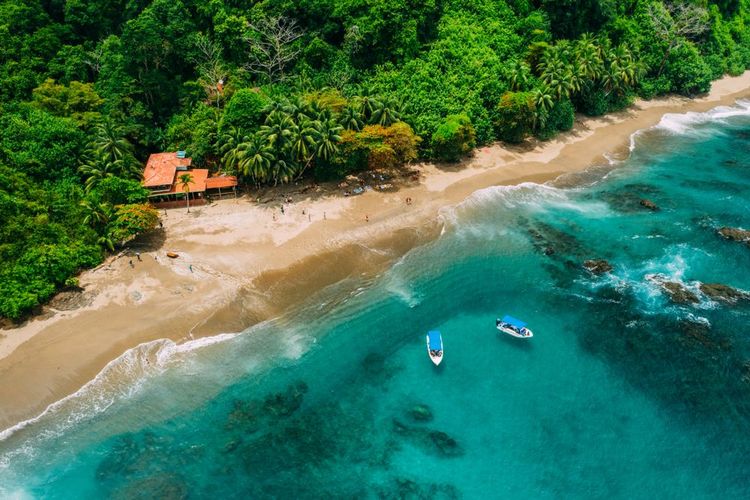
One of the beaches of Costa Rica's Isla del Caño
- © Duarte Dellarole / Shutterstock
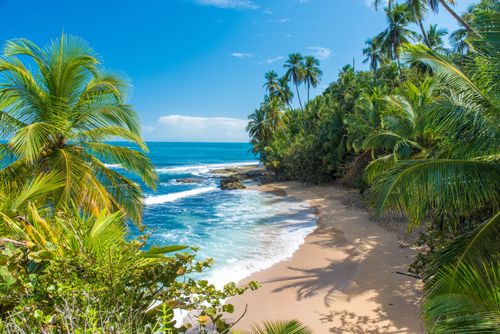

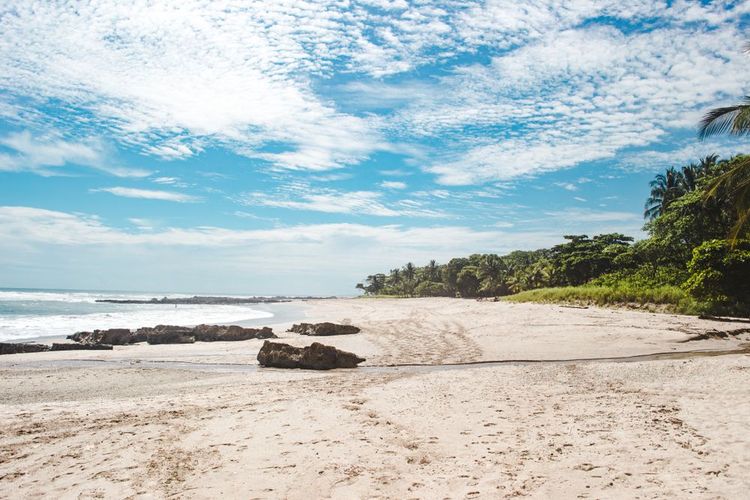 1
1
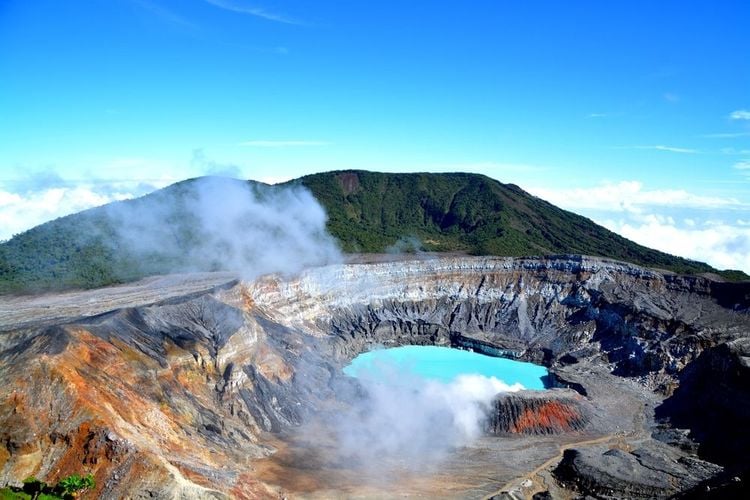 2
2
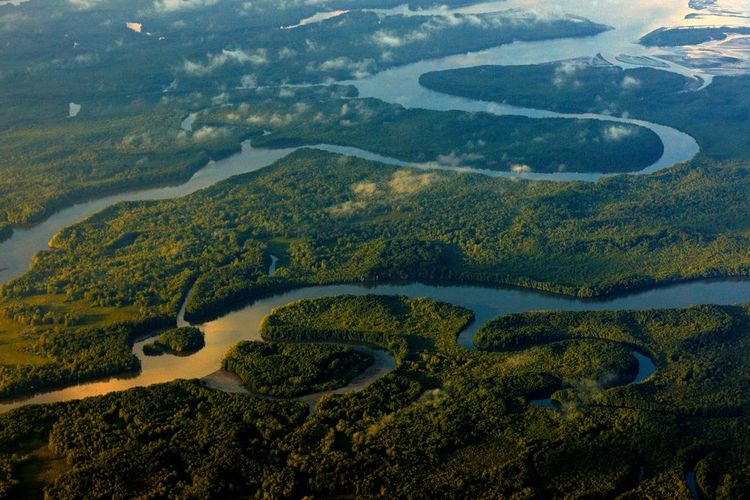 3
3
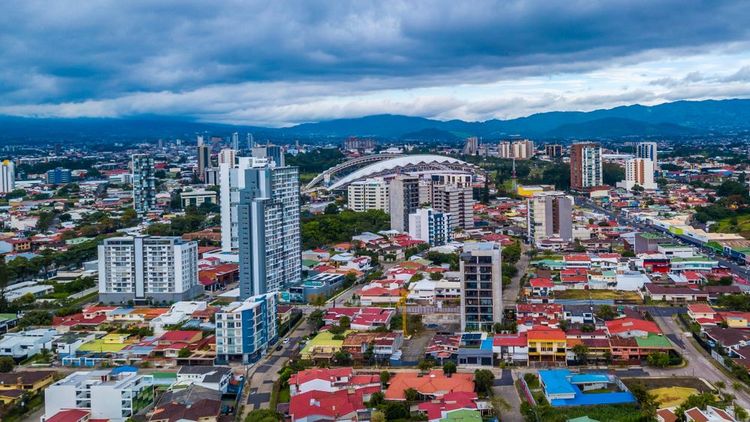 4
4
To get to Costa Rica, you can take international flights from most countries. Several airlines offer direct or stopover flights to Costa Rica's two main airports: Juan Santamaría International Airport in San José and Daniel Oduber International Airport in Liberia.
Costa Rica is teeming with hotels, guesthouses, hostels and other accommodation. Thanks to this diversity, tourists can choose their level of comfort, their budget, etc. For travellers on a tight budget, we've compiled a top 10 list of the best hostels in Costa Rica. This is your chance to meet people without breaking the bank.
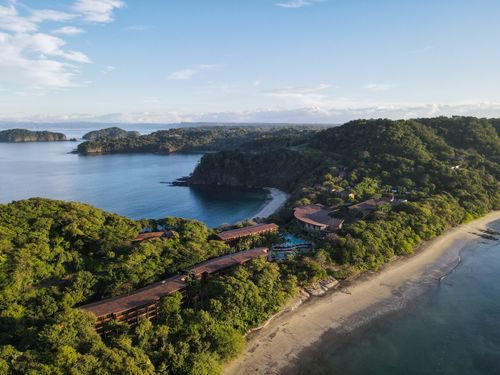
📆 When to go?
Costa Rica's climate is characterised by a dry season, from December to April, and a rainy season, from May to November. The green or rainy season does not see torrential rain, but rather daily showers, often in the late afternoon. Apart from September and October, the rains won't spoil your trip, I promise. On the other hand, if you like lush green landscapes, this is the perfect time for a holiday in Costa Rica. Bear in mind that there are 52 microclimates in the country and that temperatures vary little throughout the year: between 18°C and 25°C in San José and the Central Valley, and between 25°C and 32°C on the Caribbean and Pacific coasts. The country is a great place to visit, summer and winter alike. With its sunshine and warm temperatures, the dry season seems ideal, but beware, it's also the peak American and Canadian tourist season.
📃 Formalities and visa
Valid passport, valid for another six months from the date of return. Please note that if your flight includes a stopover in the United States, don't forget to bring the new model of machine-readable passport. Otherwise, you must apply for a visa at the US embassy. When leaving Costa Rica, allow USD 26 to pay the tax required at the airport.
Health
No vaccinations are compulsory. However, it is advisable to be vaccinated against hepatitis A and B, typhoid, tetanus and diphtheria. Costa Rica's health system is satisfactory. However, due to outdated pipes and polluted rivers, there is a high risk of bacteriological and chemical pollution of the drinking water in the capital and its suburbs. It is recommended that you drink bottled water. Costa Rica is classified as zone 1 and the risk of malaria is relatively limited. However, susceptible people should take a course of treatment. To protect yourself from the risks of malaria and dengue fever, take mosquito repellent, walking shoes, trousers and socks to protect yourself from insect bites in the forest. Since 2023, there have been no restrictions on COVID-19 in Costa Rica.
👛Currency
The official currency is the Costa Rican colon (CRC). The colon (plural colones) is pegged to the dollar. Before you leave, make sure you have dollars or traveller's cheques in dollars, as euros cannot be exchanged locally. There are several options for converting dollars: banks, exchange offices, hotels and certain shops. International credit cards (Visa, American Express, Eurocard-Mastercard) are accepted throughout the country. ATMs are fairly widespread. Banks are open from 9am to 3pm, Monday to Friday. In major cities, the main branches operate until 6pm.
💬 Language
Spanish is the official language. English is fairly widespread, particularly in tourist hotels and restaurants. It is also spoken by the black minority on the Caribbean coast.
🔌 Electricity
Bring an adaptor for American-style flat-plug sockets, except in the most recent infrastructures where everything is compatible.
☎️ Telephone
To reach Costa Rica from France, dial 00 + 506 (country code) + correspondent's number. From Costa Rica to France, dial 00 + 33 + correspondent's number without the initial 0.
🚌 Getting around
Regular lines serve the country's main towns. The rail network is virtually non-existent, since an earthquake devastated the picturesque section of the "Jungle Train". Bus routes criss-cross the country at very low fares. This is the main means of transport for Ticos. Outside the main roads, such as the Interamericana, road conditions leave much to be desired, especially if the weather is bad. In any case, be careful and avoid driving at night, as accidents are common. A 4x4 is often necessary for regions outside the central valley. An international driving licence is required to hire a vehicle (at the airport or in San José). Taxis are affordable, but must have a meter, otherwise there will be nasty surprises. The basic fare, including pick-up, is around 750 Costa Rican colones (around USD 1.20). The average fare per kilometre is around 600 Costa Rican colones (around USD 1).
⚠️ Safety
A safe and peaceful country with a strong pacifist tradition, Costa Rica is well deserving of its nickname "the Switzerland of Latin America". Costa Ricans were the only people to abolish their army 50 years ago. In San José, as in any large city, be wary of pickpockets. However, the Quai d'Orsay recommends being on your guard in San José, in the province of Guanacaste, particularly on the Nicoya peninsula and in the province of Puntarenas, along the Pacific coast between the town of Puntarenas and Manuel Antonio national park, where several thefts have been committed from rental vehicles parked on either side of the Tarcoles bridge (a crocodile-watching spot). In addition, the Quai d'Orsay website recommends avoiding going out at night in isolated areas and travelling alone, due to the possible risks of armed robbery or assault, in San José Centre and throughout the central valley. There are also natural hazards, particularly during the rainy season from May to the end of November, when there is a high risk of flooding and landslides, which can cause road closures.
The country has a well-developed and affordable bus network covering most of the country. Buses are a sustainable and cost-effective alternative to hire cars or taxis, allowing you to explore the country while reducing your carbon footprint. Think about it!
explore Try out our comparators
It is Easy to travel



